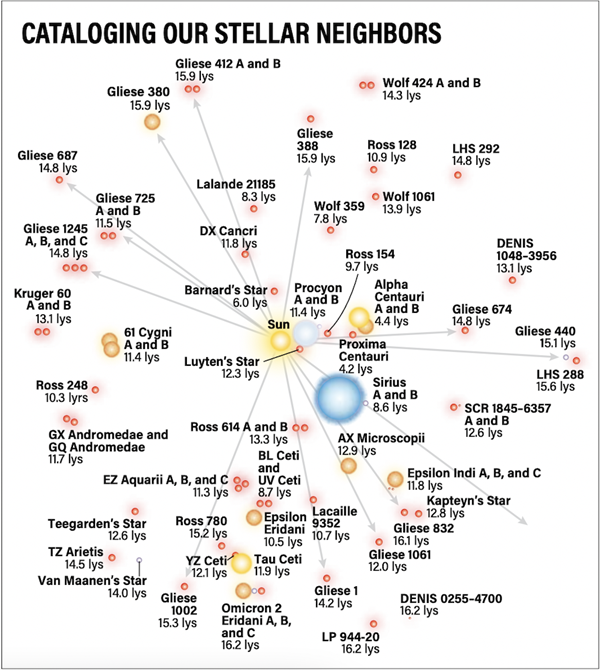Wilhelm Gliese was a German astronomer who published his Catalogue of Nearby Stars in 1957. Today, some stars are still referred to by the number Gliese gave them, such as Gliese 380 and Gliese 710.
The history of cataloging and naming stars is a long one. Even before written history, civilizations around the world were giving the brightest stars in the night sky unique names. Some names, like Betelgeuse and Sirius, have survived to modern times from their original cultures and are still used today. However, after the advent of the telescope, fainter stars were discovered and the need for a universal cataloging system grew.
The earliest example of such a catalog still in use today is Johann Bayer’s 1603 Uranometria atlas. In it, Bayer set about labeling the brightest stars in a constellation with the Greek alphabet. His intention was to label the brightest star alpha (α), the second-brightest beta (β), and so on. Unfortunately, his system wasn’t always accurate.
Many other astronomers have attempted to tackle creating an accurate and complete stellar catalog over the centuries. Since 2015, the International Astronomical Union has designated a Working Group on Star Names to formally catalog stellar names. This group has approved many of Gliese’s catalog names; hence, some stars carry his name.










